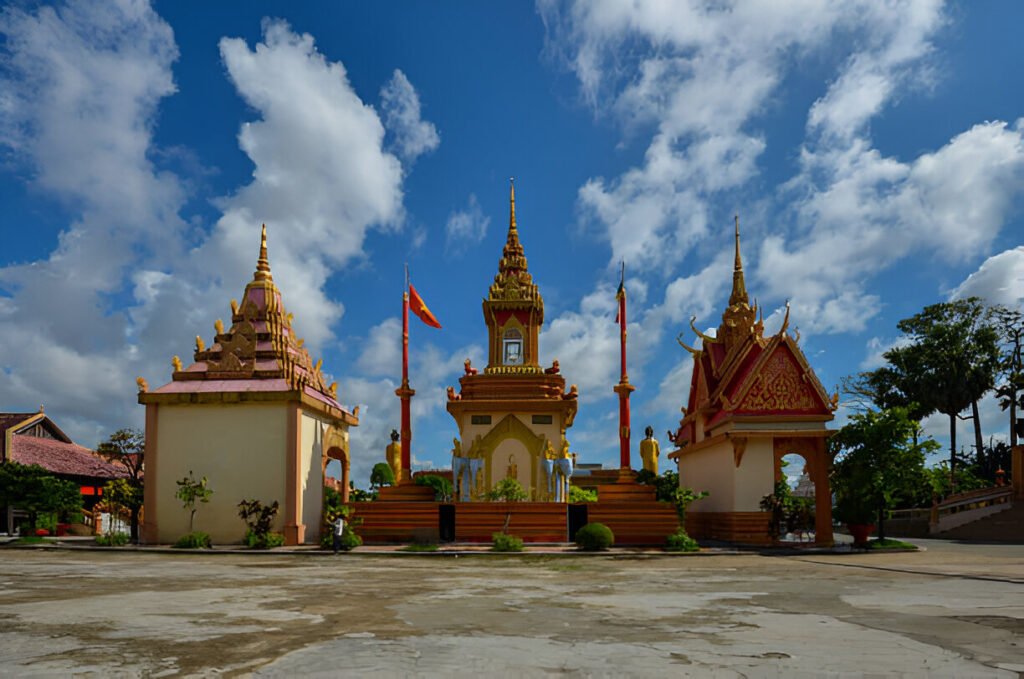Introduction:
Deep in Northern Laos, nestled amidst the lush green hills of Phongsaly Province, lies a hidden gem that has been a part of the region’s rich cultural tapestry for over 400 years: the Ban Komaen tea plantations. A must-visit destination for tea aficionados and history buffs alike, this ancient site is renowned for its old-growth tea trees, some of which are believed to be amongst the oldest in the world. The plantations have become a symbol of the region’s enduring connection to the past and a testament to the age-old traditions surrounding the cultivation and enjoyment of tea.
Explore the Rich History of Ban Komaen’s 400-Year-Old Tea Plantations:
The Ban Komaen tea plantations are steeped in history and tradition. The tea grown here is of the Camellia sinensis assamica variety, known locally as ‘Puer’, a type of fermented tea popular in China and other parts of Asia. The ancient tea trees, with gnarled trunks and vast canopies, create an enchanting landscape that transports visitors back in time. Local lore suggests that the tea produced here was once coveted by the imperial court of China, adding a touch of intrigue to the plantation’s history.
Ban Komaen’s tea plantations have been cared for and harvested by the same families for generations. Locals consider these ancient trees as sacred spirits of the forest and hold festivals in their honor, including the unique ‘Boun Hung Heua’ festival, where villagers participate in tea picking and processing ceremonies. These traditions have been preserved over centuries and are deeply ingrained in the cultural identity of the Ban Komaen people.
A Journey to Ban Komaen: Discovering the World’s Oldest Tea Gardens:
A visit to Ban Komaen offers more than just the opportunity to explore ancient tea plantations. The journey to the plantations itself is filled with breathtaking vistas of the Phongsaly landscape, with its towering hills, dense forests, and quaint hill tribe villages. On arrival, guests can wander around the plantation, admiring the majestic tea trees and soaking in the serenity of the surroundings.
Immersing yourself in the local culture is an essential part of the Ban Komaen experience. Visitors can join in the tea picking process, learn about the traditional methods of tea production, engage with the locals, or participate in a traditional tea tasting ceremony. This hands-on approach offers a unique insight into the region’s tea culture and the labor-intensive process behind each cup of Ban Komaen tea.
Description of the Attraction:
Ban Komaen’s ancient tea plantations paint a picture of a time forgotten. The sprawling plantations, with their centuries-old tea trees, create a serene and captivating landscape that seems untouched by the passage of time. The locals’ reverence for these ancient trees is palpable and adds to the mystique of the plantations.
The Ban Komaen community is warm and welcoming, eager to share their culture and traditions with visitors. Their lives revolve around tea: from the cultivation and harvesting of leaves to the intricate art of tea preparation. This deep-rooted connection between the people and their tea is a beautiful testament to the region’s heritage and way of life.
Things to Do:
While at Ban Komaen, visitors can partake in a variety of activities that offer a sneak peek into the local way of life. Join in the tea-picking process, witness traditional tea-making methods, participate in a tea tasting ceremony, or simply wander around the plantation, soaking in the tranquility. Local festivals and community events also provide an opportunity to fully engage with the Ban Komaen culture.
Local Tips:
The best time to visit Ban Komaen is during the dry season, from November to April, when the weather is cool and pleasant. It’s best to wear comfortable clothes and sturdy shoes for the plantation tour. Don’t forget to bring a hat and sunscreen to protect yourself against the sun. As a sign of respect, it’s recommended to ask permission from the locals before photographing them or their homes.
How to Get There:
Ban Komaen is approximately a 4-hour drive from the provincial capital, Phongsaly. Regular public buses ply the route. However, hiring a private vehicle or a guided tour is recommended for a more comfortable journey and to make the most of your visit.
Nearby Attractions:
While in Phongsaly, explore other attractions such as the captivating Phou Fa Stupa, the bustling Phongsaly Market, or the Phongsaly Ethnic Museum, which showcases the diverse traditions and cultures of the region’s ethnic groups.
Conclusion:
A visit to the Ban Komaen tea plantations is not just a journey to one of the world’s oldest tea gardens; it’s an immersive cultural experience that offers a unique insight into a way of life that has remained largely unchanged for centuries. Whether you’re a tea enthusiast, a history buff, or simply a traveler seeking unique experiences, Ban Komaen is a destination that promises unforgettable memories.




